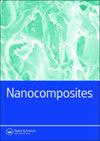Damage monitoring of adhesively bonded composite-metal hybrid joints using carbon nanotube-based sensing layer
IF 3.7
3区 材料科学
Q2 MATERIALS SCIENCE, COMPOSITES
引用次数: 9
Abstract
Abstract Improving mechanical properties and decreasing costs have significantly increased the use of fiber composites in automotive, aerospace, and civil engineering applications. Structural composites are bonded to traditional metallic materials in a variety of applications, and mechanical fasteners often cannot be used due to the low bearing strength of composites. With the increasing use of adhesives in load-bearing structures, novel techniques are required for monitoring the structural integrity of adhesive joints. Previously, carbon nanotubes (CNTs) have been added to adhesives and resins to create in-situ sensors, but the increased viscosity and potential for galvanic corrosion remains a challenge. In this research, a piezoresistive carbon nanotube-based sensing layer is embedded in a composite/steel adhesive joint for damage sensing. The use of a thin sensing layer with low-fiber volume fraction enables the use of existing adhesives without causing any major changes in the physical properties of the adhesives or the curing cycle and reduces the chances of galvanic corrosion. Different approaches of using an adhesive layer and a nonconductive fabric are investigated for insulation of the sensing layer. The nonconductive fabric approach for insulating the specimen yields better mechanical properties as the there are no weak interfaces in the adhesive bondline. Additionally, it is more convenient for scaling up for field applications as the adhesive is cured in one stage. The sensing layer can not only be used to detect incipient damage in the joint, but also identify different modes of failure. Graphical Abstract基于碳纳米管传感层的复合金属粘接接头损伤监测
随着机械性能的提高和成本的降低,纤维复合材料在汽车、航空航天和土木工程中的应用显著增加。结构复合材料在各种应用中都是与传统金属材料粘接,由于复合材料的承载强度低,机械紧固件往往不能使用。随着胶粘剂在承重结构中的应用越来越多,需要新的技术来监测胶粘剂接头的结构完整性。此前,碳纳米管(CNTs)已被添加到粘合剂和树脂中以制造原位传感器,但粘度增加和潜在的电偶腐蚀仍然是一个挑战。在本研究中,将压阻式碳纳米管传感层嵌入复合材料/钢粘接接头中进行损伤传感。使用具有低纤维体积分数的薄传感层可以使用现有的粘合剂,而不会对粘合剂的物理性能或固化周期造成任何重大变化,并减少电偶腐蚀的机会。研究了使用粘接层和不导电织物对传感层进行绝缘的不同方法。采用非导电织物的方法对试样进行绝缘,由于在粘合线上没有弱界面,因而获得了更好的力学性能。此外,由于粘合剂在一个阶段固化,因此更便于扩大现场应用。传感层不仅可以用于检测接头的早期损伤,还可以用于识别不同的破坏模式。图形抽象
本文章由计算机程序翻译,如有差异,请以英文原文为准。
求助全文
约1分钟内获得全文
求助全文

 求助内容:
求助内容: 应助结果提醒方式:
应助结果提醒方式:


